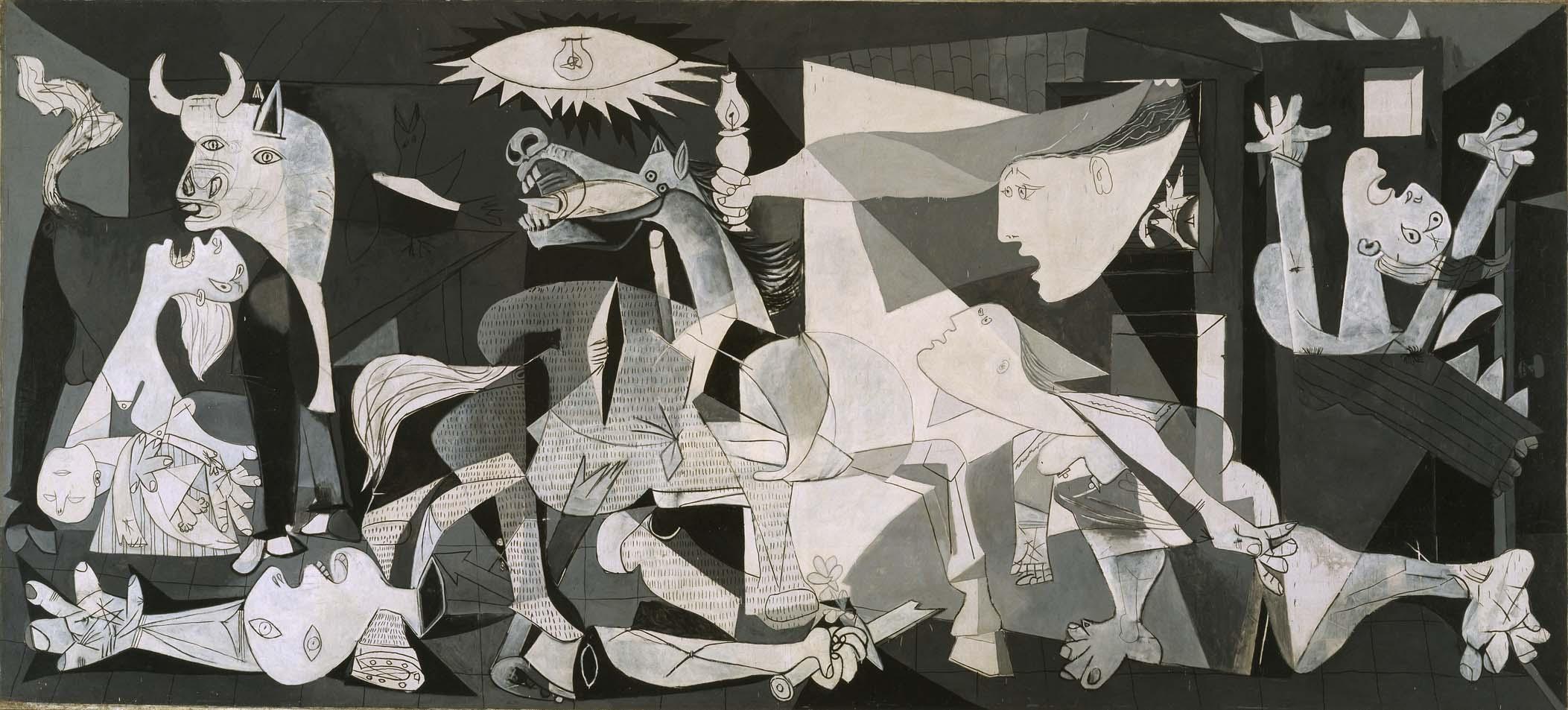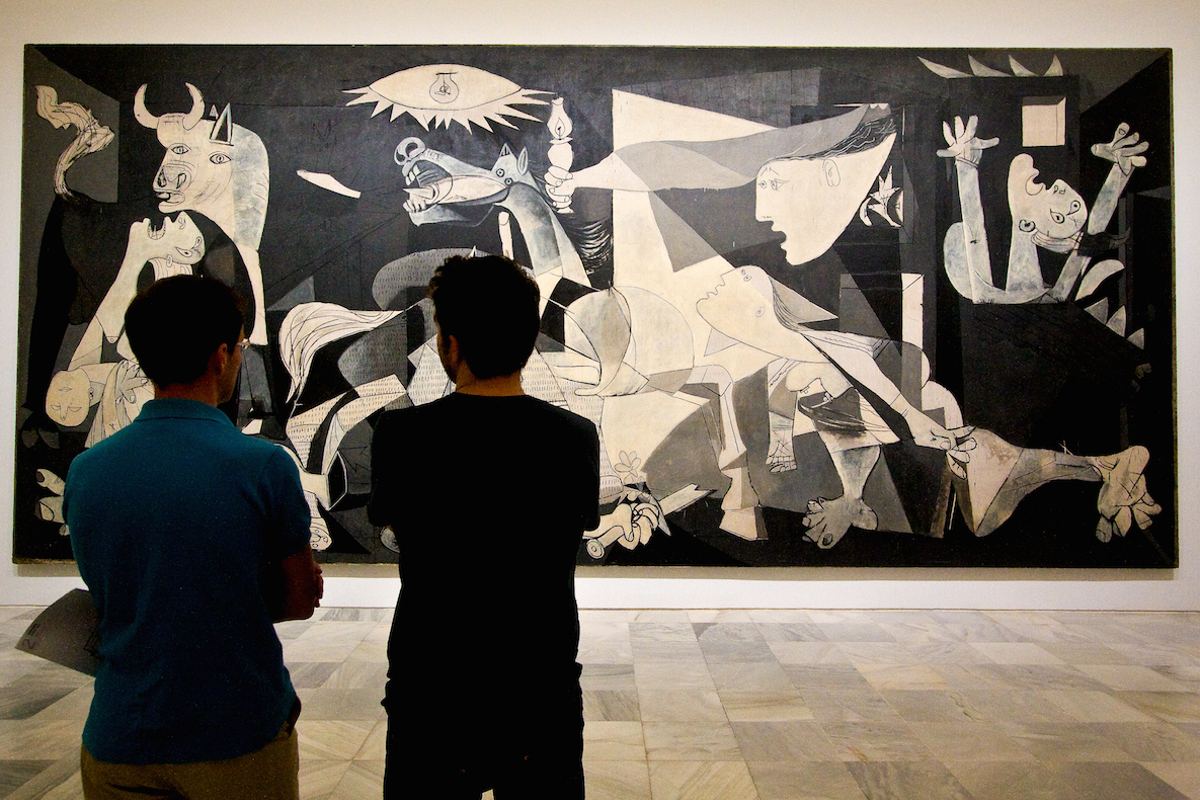
Pablo Picasso, who was born on October 25, 1881, in the picturesque city of Málaga, Spain, is widely regarded as one of the most significant and influential artists of the 20th century. His groundbreaking contributions to the world of art, characterized by an innovative and experimental approach, have fundamentally transformed the landscape of modern art. Throughout his prolific career, Picasso demonstrated an extraordinary ability to reinvent his artistic style, moving through various phases and movements, including Blue Period, Rose Period, and Cubism. This article aims to explore the multifaceted life of Picasso, highlighting his most renowned works and examining the profound and lasting impact he has had on the art world and beyond. From his early influences to his later masterpieces, we will uncover the essence of his genius and the legacy that continues to inspire artists and art lovers alike.
Early Life and Artistic Beginnings

Childhood and Family Background
Pablo Picasso was born into a family deeply rooted in the arts, which played a significant role in shaping his future as one of the most influential artists of the 20th century. His father, José Ruiz Blasco, was a dedicated drawing professor, and from an early age, Picasso exhibited remarkable talent in drawing and painting. By the time he reached the age of 10, he was already studying under his father’s guidance, honing his skills and nurturing his creativity. This early immersion in the world of art not only fostered his innate abilities but also laid a solid foundation for his illustrious career ahead.
Move to Barcelona
In 1895, the Picasso family made a significant move to Barcelona, a city known for its rich cultural and artistic heritage. It was here that Picasso enrolled in a local art academy, where he was exposed to a diverse range of artistic influences and styles. The vibrant artistic community in Barcelona played a crucial role in his development as an artist, allowing him to experiment and refine his unique style. This period marked a turning point in his artistic journey, as he began to explore new techniques and ideas that would later define his work.
First Exhibition
At the remarkably young age of 13, Picasso achieved a significant milestone by holding his first exhibition in A Coruña. This event showcased a selection of his early works, demonstrating his exceptional talent and creativity even at such a tender age. This exhibition was merely the beginning of what would become a prolific and groundbreaking career, during which Picasso would go on to create an astonishing body of work, estimated to be around 50,000 artworks throughout his lifetime. His early success foreshadowed the immense impact he would have on the art world and beyond.
The Evolution of Picasso’s Art
:max_bytes(150000):strip_icc()/Picasso_Guernica-56a6e75f5f9b58b7d0e56a79.jpg)
The Blue Period
Between the years of 1901 and 1904, the renowned artist Pablo Picasso entered a profound and transformative phase known as his Blue Period. This era is marked by a distinct use of somber and melancholic tones, reflecting themes of poverty, isolation, and despair. The emotional weight of this period was significantly influenced by the tragic suicide of his close friend, Carles Casagemas, which left a deep impact on Picasso’s psyche and artistic expression. During this time, he created works that poignantly captured the struggles of the human condition, often portraying figures in states of sorrow and hardship.
The Rose Period
Following the somber tones of the Blue Period, Picasso experienced a notable shift in his artistic direction as he transitioned into the Rose Period, which spanned from 1904 to 1906. This new phase was characterized by a brighter and more vibrant color palette, symbolizing a newfound sense of hope and joy. During the Rose Period, Picasso began to explore themes of love, happiness, and the beauty of life, frequently depicting circus performers, harlequins, and other joyful figures. This shift not only reflected a change in his emotional state but also showcased his evolving artistic style and interests.
Key Works from the Blue and Rose Periods
| Artwork | Year | Style |
|---|---|---|
| The Old Guitarist | 1903-1904 | Blue Period |
| Family of Saltimbanques | 1905 | Rose Period |
Birth of Cubism

Collaboration with Georges Braque
In the year 1907, the art world witnessed a groundbreaking collaboration between two visionary artists, Pablo Picasso and Georges Braque. Together, they embarked on a creative journey that would give birth to the revolutionary art movement known as Cubism. This innovative style marked a significant departure from traditional artistic conventions, as it sought to depict subjects from multiple perspectives simultaneously. By fragmenting forms and reassembling them on the canvas, Picasso and Braque challenged the viewer’s perception and understanding of space and form, ultimately reshaping the landscape of modern art.
Les Demoiselles d’Avignon
Among Picasso’s most celebrated masterpieces is Les Demoiselles d’Avignon, created in the same pivotal year of 1907. This iconic painting is frequently hailed as the first true Cubist work, as it boldly defied the established norms of representing the human figure. The composition features five female figures, rendered in a fragmented and abstract manner, which ignited intense discussions about the essence and purpose of art. The work’s radical approach not only redefined the portrayal of the human form but also set the stage for future artistic exploration and experimentation.
The Impact of Cubism
The emergence of Cubism had profound implications, not only for Picasso’s own artistic evolution but also for the broader art community. This movement inspired a multitude of artists and subsequent art movements, laying the groundwork for the development of abstract art throughout the 20th century. The principles of Cubism encouraged artists to explore new ways of seeing and representing reality, ultimately leading to a rich tapestry of artistic expression that continues to resonate in contemporary art today.
Political Engagement and Guernica

Response to War
Picasso’s art was not just about aesthetics; it also reflected his political beliefs. His painting Guernica (1937) was a powerful response to the bombing of the Basque town during the Spanish Civil War. This monumental work is a haunting depiction of the horrors of war and remains one of his most significant pieces.
Legacy of Guernica
Initially met with mixed reviews, Guernica has since become a symbol of anti-war sentiment and is celebrated worldwide for its emotional depth and political message.
Personal Life and Relationships

Romantic Entanglements
Picasso’s personal life was as complex as his art. He had two wives, numerous mistresses, and four children. His relationships often influenced his work, with many of his lovers serving as muses for his art.
Influence of Women on His Art
Women played a crucial role in Picasso’s life and work. His relationships with figures like Olga Khokhlova and Dora Maar not only shaped his personal experiences but also left a lasting impact on his artistic output.
Later Years and Continued Innovation

Experimentation with Styles
Even in his later years, Picasso never confined himself to a single style. He experimented with various media, including sculpture and ceramics, continually pushing the boundaries of his creativity.
Record-Breaking Art Sales
Picasso’s works have consistently fetched astronomical prices at auctions. In 2015, his painting Women of Algiers (Version O) sold for a staggering $179 million, setting a record that still stands today.
Impact on the Art Market
The high prices of Picasso’s works reflect not only his artistic genius but also the enduring demand for his pieces in the art market.

Pablo Picasso passed away on April 8, 1973, but his legacy continues to thrive. His contributions to art have reshaped how we perceive creativity and expression. From his early days in Spain to his revolutionary work in Paris, Picasso’s journey is a testament to the power of art to transcend time and influence generations.
Whether you’re an art enthusiast or just curious about the man behind the masterpieces, Picasso’s life story is a fascinating exploration of talent, innovation, and the human experience.
